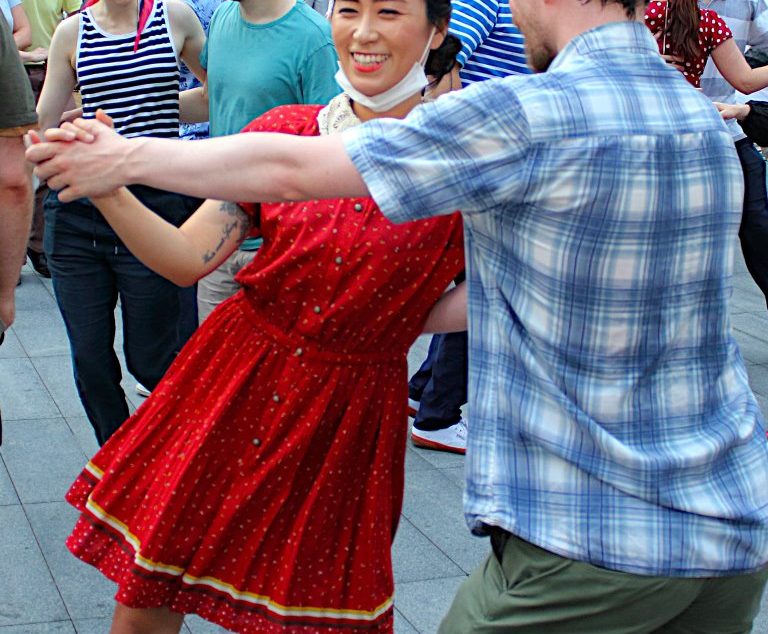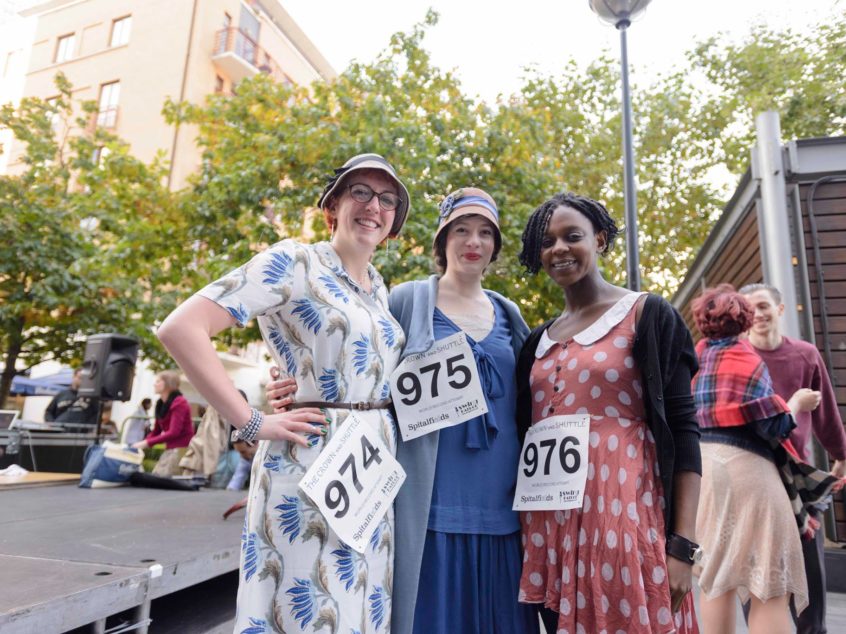Regular blues dancer, Dalvinder, has written about blues dancing and kindly shared it with us:
1) Dance to some awesome music…
Muddy Waters, Irma Thomas and Etta James are just some of the artists you might hear
when you dance the blues. Whether it’s a just one man and his guitar or a singer backed
by an orchestra, there’s a huge variety of music that you can’t help but dance to.
2) … with some very creative lyrics!
If a someone bursts into spontaneous laughter on the dance floor, there might be a hokum
blues song playing. Listen out for Dinah Washington’s seven foot tall dentist, Elmore
James dusting his broom or Bessie Smith lamenting the lack of sugar in her bowl. Blues
lyrics are full of double entendres that would shock your parents.
3) Experience the pleasure of Polyrhythmns
Why move just one part of your body when you can move several at the same time in
contrasting rhythms? Blues is one of the few dances where you can shimmy your chest,
circle your hips and walk at the same time. All this whilst dancing with a partner!
4) Connect
From close embrace to solo jam circle, blues teaches you several different ways to
connect with other human beings. Even when you’re solo dancing without a partner you
learn how to connect with the floor, the music and most importantly yourself.
5) Learn how to dance to a whole range of tempos and styles of music.
While many dancers think of blues as a slow dance, it spans a whole range of tempos.
Some versions of “Got My Mojo Working” hit over 200bpm, while songs like “Stormy
Monday” or “Ain’t No Sunshine” can be as slow as 60 or 70bpm. After dancing blues, you’ll
be able to music at lots of different speeds.
As well as various tempos, blues is full of contrasting musical genres and dance steps.
Whether it’s elegant ballroomin’ to a blues waltz or fishtails to a funky track it’s unlikely
you’ll get bored on the dance floor.
6) Connect with the African Roots of Swing
Blues is an African American folk dance which developed in the 1800s at a time of slavery.
The music built on African traditions such as call and response and complex rhythms.
Blues performers incorporated work songs and spirituals that were a part of daily life in
America’s Deep South. Many of the rhythms and steps in later swing dances have their
roots in blues dance and music. While you might recognise some steps, blues will
challenge and expand your dance vocabulary.


